
Copernical Team
Korean researchers create an electrostatic environment that simulates the moon's surface
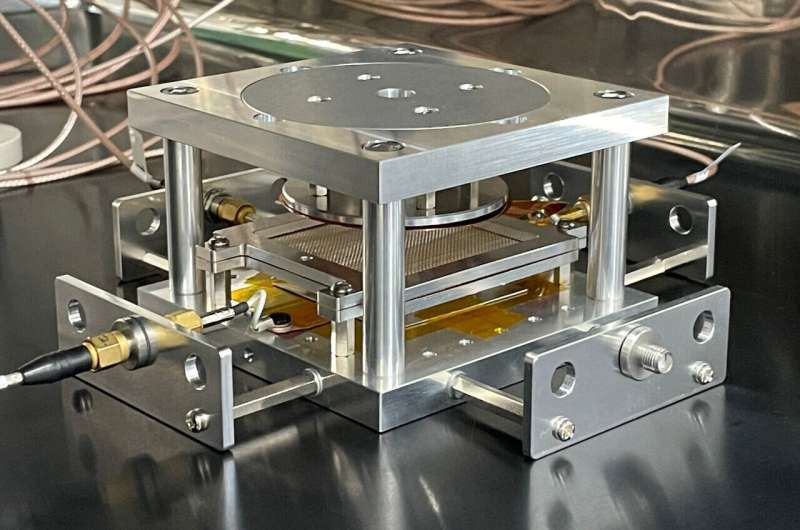
Continuous research is being conducted globally on using the moon as an advanced base for deep space exploration, and Korea is no exception in these efforts. The Korea Institute of Civil Engineering and Building Technology (KICT) successfully implemented an electrostatic environment that simulates the moon's surface conditions, not in space but on Earth. The researchers also assessed its performance and effectiveness.
Among the most serious threats in executing lunar missions is the moon's surface environment, which is electrostatically charged. Due to its extremely thin atmosphere, the moon is directly exposed to solar ultraviolet rays, X-rays, solar wind, Earth plasma, etc. Thus, clouds of dust on the moon exhibit strong static electricity. The moon's electrostatic environment is positively charged during the day and negatively charged during the night.
Given that the moon has nearly no atmosphere, dust can be easily blown away even by small impacts due to the minimal air resistance.
Could tardigrades have colonized the moon?

Just over five years ago, on 22 February 2019, an unmanned space probe was placed in orbit around the moon. Named Beresheet and built by SpaceIL and Israel Aerospace Industries, it was intended to be the first private spacecraft to perform a soft landing. Among the probe's payload were tardigrades, renowed for their ability to survive in even the harshest climates.
The mission ran into trouble from the start, with the failure of "star tracker" cameras intended to determine the spacecraft's orientation and thus properly control its motors. Budgetary limitations had imposed a pared-down design, and while the command center was able to work around some problems, things got even trickier on 11 April, the day of the landing.
Electrodes in spacesuits could protect astronauts from harmful dust on Mars
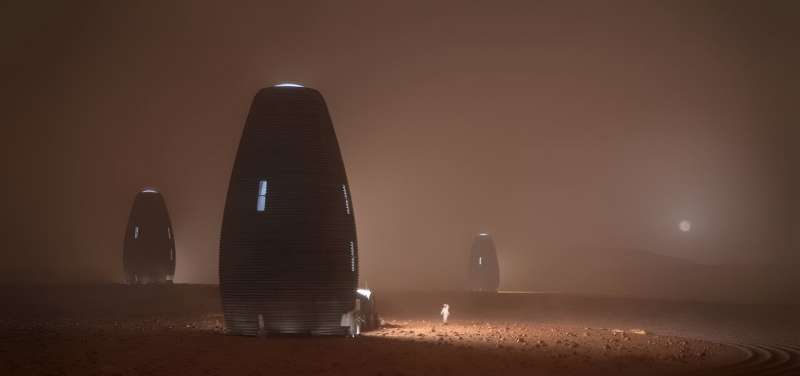
To quote NASA associate administrator Jim Reuter, sending crewed missions to Mars by 2040 is an "audacious goal." The challenges include the distance involved, which can take up to six months to traverse using conventional propulsion methods. Then there's the hazard posed by radiation, which includes increased exposure to solar particles, flares, and galactic cosmic rays (GCRs). And then there's the time the crews will spend in microgravity during transits, which can take a serious toll on human health, physiology, and psychology.
But what about the challenges of living and working on Mars for several months at a time? While elevated radiation and lower gravity are a concern, so is Martian regolith. Like lunar regolith, dust on Mars will adhere to astronauts' spacesuits and inflict wear on their equipment. However, it also contains harmful particles that must be removed to prevent contaminating habitats.
Toppled moon lander sends back more images, with only hours left until it dies
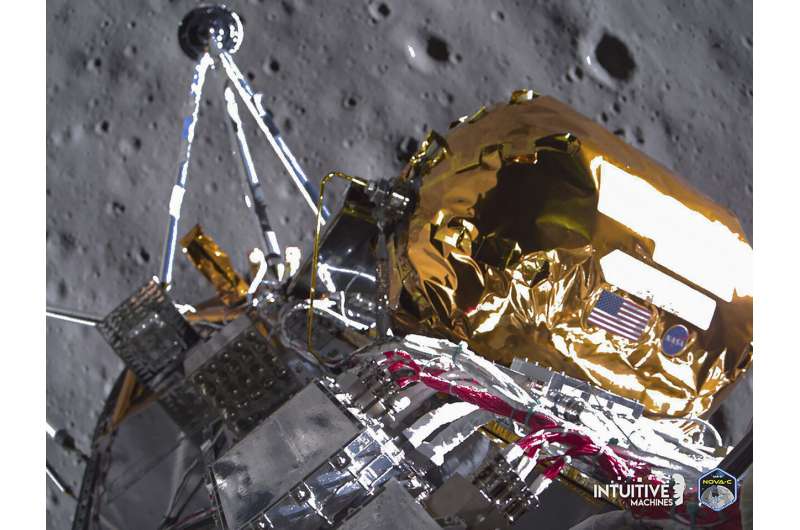
A moon lander that ended up on its side managed to beam back more pictures, with only hours remaining before it dies.
A NASA mission that collided with an asteroid didn't just leave a dent. It reshaped the space rock
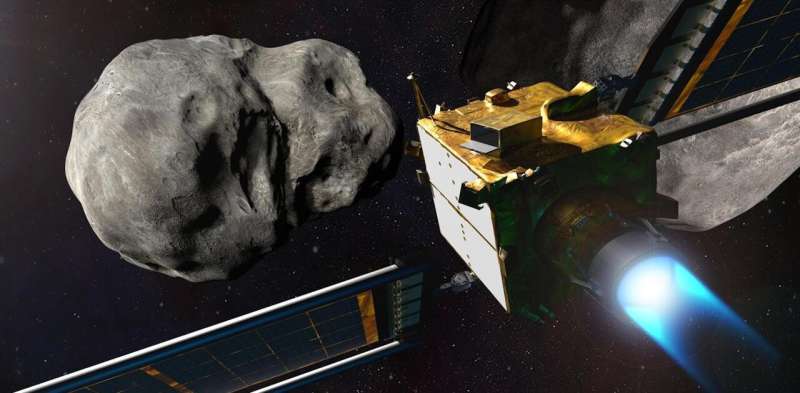
A frequent idea in sci-fi and apocalyptic films is that of an asteroid striking Earth and causing global devastation. While the probabilities of this kind of mass extinction occurring on our planet are incredibly small, they are not zero.
The results of Nasa's Dart mission to the asteroid Dimorphos have now been published in Nature Astronomy. They contain fascinating details about the composition of this asteroid and whether we can defend Earth against incoming space rocks.
The Double Asteroid Redirection Test (Dart) was a spacecraft mission that launched in November 2021. It was sent to an asteroid called Dimorphos and commanded to collide with it, head on, in September 2022.
Dimorphos posed and poses no threat to Earth in the near future. But the mission was designed to see if deflecting an asteroid away from a collision course with Earth was possible through "kinetic" means—in other words, a direct impact of a human-made object on its surface.
Asteroid missions are never easy.
Artemis II crew, recovery teams train for final phase of moon mission
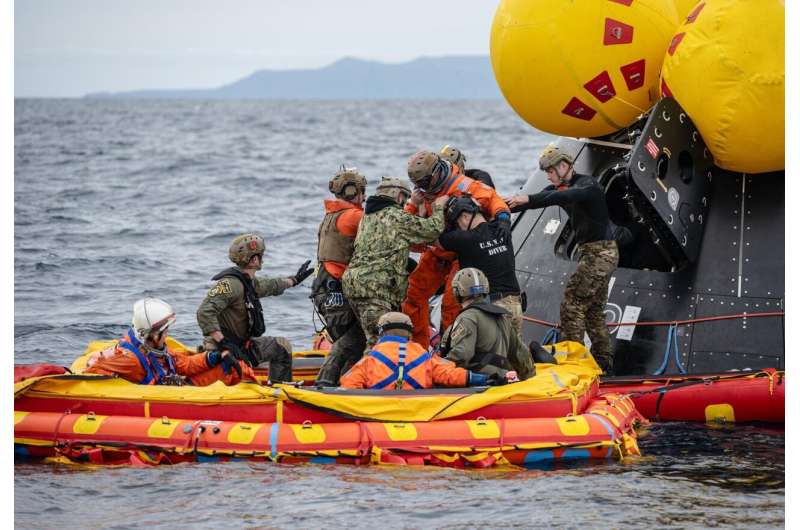
NASA astronaut and Artemis II pilot Victor Glover is assisted by U.S. Navy personnel as he exits a mockup of the Orion spacecraft in the Pacific Ocean during training Feb. 25, while his crewmates look on.
The Artemis II crew and a team from NASA and the Department of Defense are spending several days at sea to test the procedures and tools that will be used to help the crew to safety when they splash down in the ocean at the end of their 10-day, 685,000-mile journey around the moon next year as part of the first crewed mission under NASA's Artemis campaign.
On the day of the crew's return to Earth, a Navy ship with specially trained personnel will await splashdown and then approach the Orion capsule to help extract the four astronauts. An inflatable raft, called the front porch, will provide a place for them to rest when they exit the capsule before they are then individually hoisted by helicopters and flown to the waiting ship.
Artemis II, launching atop the SLS (Space Launch System) rocket from NASA's Kennedy Space Center in Florida, will test the Orion spacecraft's life support systems needed for future lunar missions.
Highlights of results from space station science in 2023

The International Space Station is a microgravity research lab hosting groundbreaking technology demonstrations and scientific investigations. More than 3,700 investigations conducted to date have generated roughly 500 research articles published in scientific journals. In 2023, the orbiting lab hosted more than 500 investigations.
See more space station research achievements and findings in the Annual Highlights of Results publication, and read highlights of results published between October 2022 and October 2023 below:
A new spin on pulsars
Neutron stars, an ultra-dense matter left behind when massive stars explode as supernovas, are also called pulsars because they spin and emit X-ray radiation in beams that sweep the sky like lighthouses. The Neutron star Interior Composition Explorer (NICER) collects this radiation to study the structure, dynamics, and energetics of pulsars. Researchers used NICER data to calculate the rotations of six pulsars and update mathematical models of their spin properties.
Precise measurements enhance the understanding of pulsars, including their production of gravitational waves, and help address fundamental questions about matter and gravity.
China names its capsule and lander for its upcoming human lunar missions
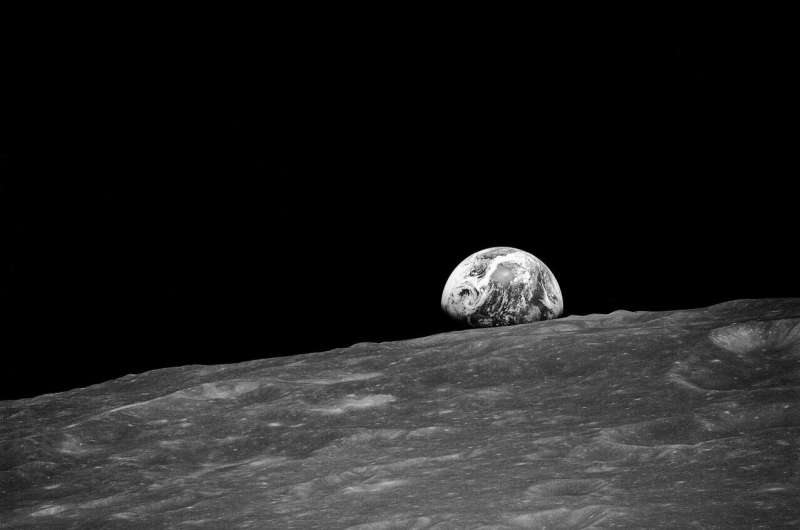
In a recent announcement, the Chinese Space Agency (CSA) unveiled the names for its forthcoming lunar mission components. The CSA have been working toward sending humans to the moon through a series of robotic missions. The 22-ton capsule that is taking the astronauts to the moon is called Mengzhuo (translates to "dream vessel") and the lander has been named Lanyue (meaning "embracing the moon"). Assuming all goes to plan, they will send two humans and a rover to the surface of the moon by 2030.
Despite the fact that the CSA have not published a date for the mission yet, if all goes well, they will become the second country to get humans to the lunar surface. The capsules will launch to the moon atop their new super-heavy-lift carrier rocket named Long March 10.
According to Chinese state media, the Mengzhou spacecraft will include the re-entry module designed to house the astronauts and will also function as a control center. In addition to this, there will be the service module that is home to power and propulsion systems.
FAA closes investigation into SpaceX Starship's double-explosion 2nd flight
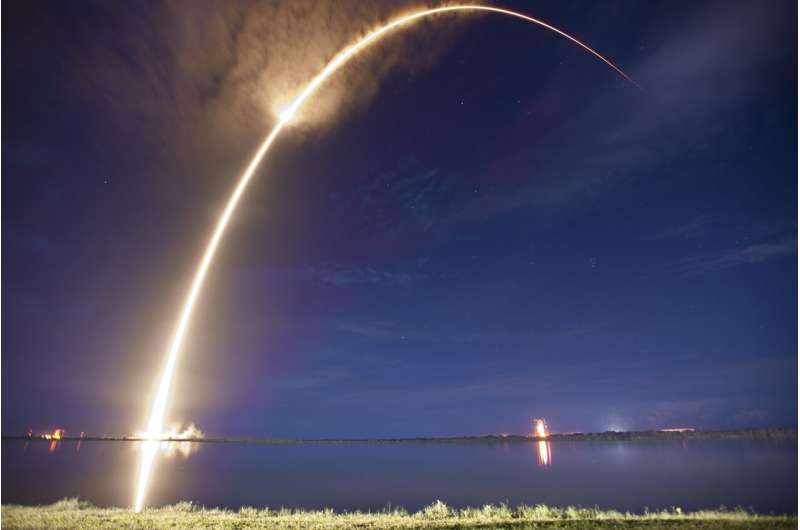
As SpaceX continues to gear up for flight No. 3 of its massive Starship and Super Heavy from Texas, the Federal Aviation Administration has closed the investigation into the second flight that resulted in explosions of both the booster and upper stages back in November.
The FAA on Monday said the SpaceX-led investigation into what was classified as a "mishap," cited 17 action items that have to be addressed before any future launch licenses from SpaceX's Boca Chica, Texas launch site Starbase are approved.
Starship is SpaceX's replacement launch system for its Falcon 9 and Falcon Heavy rockets and is completely reusable. It's aiming to launch a third test flight as soon as next month if it can get approval.
The first launch of Starship and Super Heavy in April 2023 also ended in an explosion, but with the booster still connected to the upper stage. That launch also walloped the launch pad, and it took more than six months to close out that mishap investigation with 63 corrective actions.
The second flight performed much better despite the double combustive incidents mid-flight.
Study finds the West is best to spot UFOs

In July of 2023, retired commander in the U.S. Navy David Fravor testified to the House Oversight Committee about a mysterious, Tic Tac-shaped object that he and three others observed over the Pacific Ocean in 2004. The congressional hearings riveted the world by bringing Unidentified Anomalous Phenomena (UAP) out of the "alien truther" realm and into the mainstream.
"This [Tic Tac-shaped object that] had just traveled 60 miles in…less than a minute, was far superior in performance to my brand-new F/A-18F and did not operate with any of the known aerodynamic principles that we expect for objects that fly in our atmosphere," claimed Fravor.
As sensor technology has advanced and personal aircraft use has skyrocketed, our ability to explain strange events has become harder to resolve. The U.S. Department of Defense has increasingly taken UAP, formerly known as Unidentified Flying Objects (UFOs), as a serious threat to national security.

